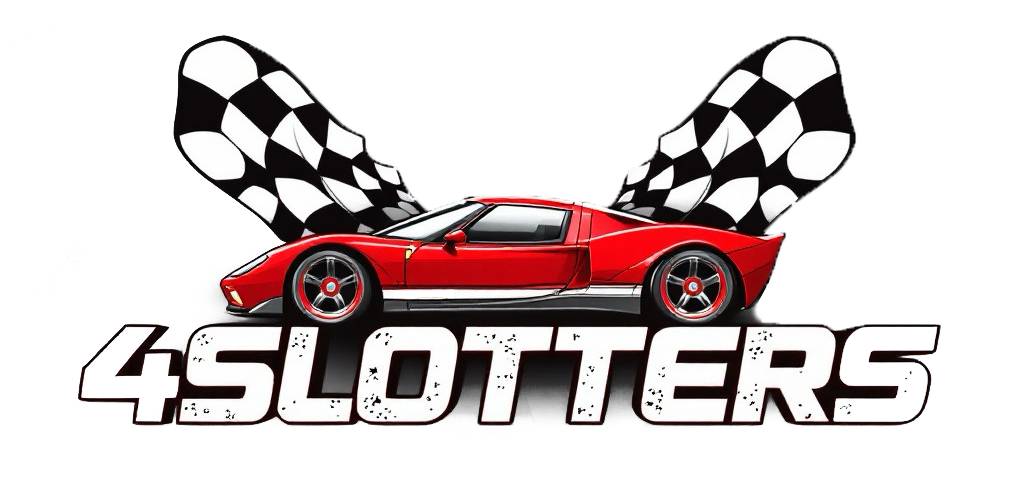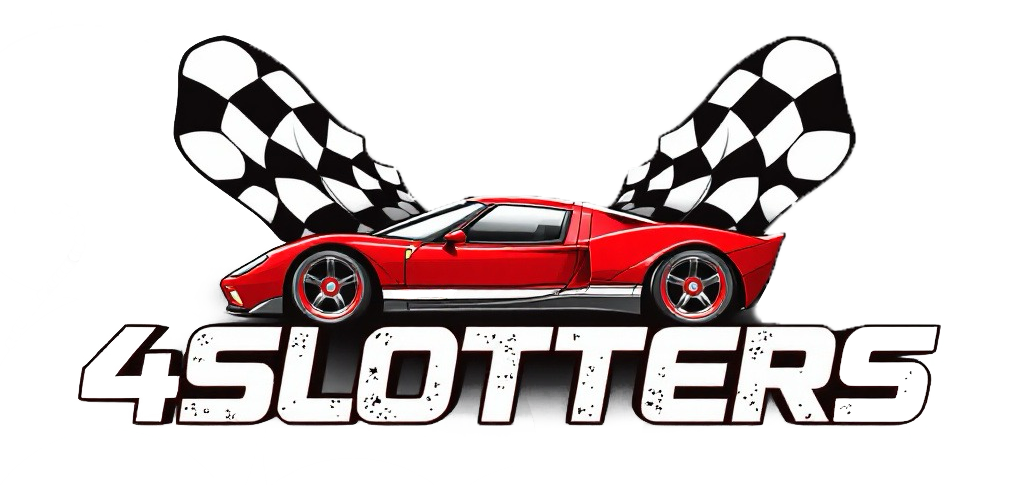The humble slot car has come a long way since its inception, transforming from a simple children's toy into a sophisticated hobby enjoyed by enthusiasts of all ages around the world. This fascinating journey spans over a century of innovation, technological advancement, and cultural significance. Let's explore how slot cars evolved from their primitive beginnings to the high-tech racing systems we enjoy today.
Whether you're new to the hobby or a seasoned collector, understanding the rich history of slot cars adds depth to your appreciation of these miniature marvels. If you're just getting started, you might also want to check out our Slot Car Racing 101: A Complete Beginner's Guide.
The concept of guided model cars dates back further than many realize:
- 1908: The first commercial slot car system, the Lionel Racing Cars, was produced by the Lionel Corporation in the United States
- 1912: Lionel introduced a more sophisticated version with a center rail providing power
- 1930s: Various European manufacturers experimented with guided model cars
- 1940s: British hobbyists began building home racetracks with simple slot mechanisms
These early systems were crude by today's standards, with limited control and relatively simple designs. Cars were typically made of metal, powered by basic electric motors, and ran on tracks with raised rails rather than slots.
After World War II, several factors contributed to the advancement of slot car technology:
- Availability of new materials like plastics
- Improvements in small electric motor design
- Growing interest in model hobbies
- Increased leisure time and disposable income
These developments set the stage for the golden age of slot car racing that would follow. Today's enthusiasts can still appreciate these vintage designs through our collection of classic-inspired models.
The 1950s saw slot cars begin their transformation into a mainstream hobby:
- 1952: The Minimodels company in the UK introduced the first modern slot car system called Scalextric, featuring rubber tracks with metal conductors
- 1957: Scalextric switched to plastic track sections, making home layouts more practical
- 1957: Victory Industries launched the VIP brand, a major competitor to Scalextric
- 1958: Aurora introduced the "Model Motoring" HO scale slot car system in the US, which would later become Aurora AFX
The 1960s represented the absolute peak of slot car popularity:
- Commercial raceway boom: Thousands of commercial slot car centers opened across the United States and Europe
- Technological innovation: Rapid development of better motors, chassis designs, and controller systems
- Manufacturer expansion: Dozens of companies entered the market with various scales and systems
- Media coverage: Slot car racing received coverage in mainstream publications and television
- Professional racing: Organized competitions with cash prizes and sponsored racers emerged
During this period, slot car racing was not just a hobby but a significant cultural phenomenon. At the height of the boom in the mid-1960s, there were an estimated 3,000 commercial slot car raceways in the United States alone.
If you're interested in creating your own home raceway inspired by this golden era, check out our Setting Up Your Dream Slot Car Track: Layout Design Guide.
Several scales and manufacturers dominated this golden era:
- 1:24 scale: The largest common scale, popular in commercial raceways
- Manufacturers: Monogram, Revell, Cox, Strombecker
- 1:32 scale: The most popular home racing scale
- Manufacturers: Scalextric, Carrera, Ninco, Strombecker
- HO scale (1:87/1:64): Compact scale compatible with model railroads
- Manufacturers: Aurora (AFX), Tyco, Atlas, Faller
Not sure which scale is right for you? Our Understanding Slot Car Scales guide can help you make the perfect choice for your space and interests.
By the early 1970s, the slot car boom had begun to fade:
- Commercial raceway closures: The number of dedicated facilities dropped dramatically
- Manufacturer consolidation: Many companies exited the market or were acquired
- Competition from other hobbies: Video games and RC cars captured youth interest
- Economic factors: Economic downturns reduced disposable income for hobbies
Despite the market contraction, slot car racing didn't disappear but instead transformed:
- Enthusiast focus: The hobby shifted from mass popularity to dedicated enthusiasts
- Club racing: Local clubs maintained the competitive racing aspect
- Home racing emphasis: Manufacturers focused more on home sets than commercial equipment
- Collector interest: Vintage slot cars began to be valued as collectibles
For those interested in the collecting aspect, our companion guide Slot Cars as Collectibles: Investment Guide provides valuable insights into this fascinating dimension of the hobby.
The 1970s and 1980s saw continued technological improvements:
- Improved motors: More efficient and powerful motors
- Better tires: New compounds provided improved grip
- Enhanced controllers: More sophisticated throttle control
- Magnet systems: Introduction of downforce magnets to improve handling
Many of these technological advancements continue to influence modern slot car design. Explore our parts collection to enhance your cars with the latest performance components.
The 1990s saw a resurgence in slot car popularity:
- Nostalgia factor: Adults who enjoyed slot cars as children in the 1960s returned to the hobby
- Manufacturer reinvestment: Companies like Scalextric and Carrera expanded their offerings
- New entrants: Brands like Ninco and Fly brought fresh innovation to the market
- Internet community: Online forums and websites connected enthusiasts globally
- Improved manufacturing: Advanced production techniques allowed for more detailed models
The 2000s brought the biggest technological leap since the hobby's inception:
- Digital systems: Introduction of digital technology allowing multiple cars to share lanes and change lanes
- Computer interfaces: Systems that connected to computers for lap timing and race management
- Wireless controllers: Freedom from being tethered to the track
- Advanced features: Fuel management, pit stops, and other realistic racing elements
Major digital systems included:
- Scalextric Sport Digital (later Scalextric Digital)
- Carrera Digital 132 and Digital 124
- Ninco N-Digital
Curious about the differences between digital and traditional analog systems? Our Digital vs. Analog Slot Car Systems: Pros and Cons guide offers a detailed comparison.
Today's slot car hobby represents a blend of tradition and cutting-edge technology:
- Highly detailed models: Slot cars now feature incredible accuracy and detail
- Multiple system options: From basic analog to sophisticated digital systems
- Scale-specific communities: Different scales have developed distinct followings and racing formats
- Crossover with other hobbies: Integration with model railroading and diorama building
- Global community: International competitions and connected enthusiast groups
- Online resources: Vast knowledge base of techniques, modifications, and history
Browse our complete slot car sets to experience the best of modern slot car technology.
Recent technological developments include:
- Bluetooth connectivity: Smartphone control of cars and track features
- Advanced materials: Carbon fiber chassis, silicone tires, and neodymium magnets
- 3D printing: Custom parts and accessories created by enthusiasts
- LED lighting: Realistic headlights, taillights, and track lighting
- Sound systems: Realistic engine and racing sounds
Want to fine-tune your cars with the latest technology? Our Slot Car Performance Tuning: Speed Secrets Revealed guide offers professional tips and tricks.
The collecting side of the hobby has grown significantly:
- Vintage market: Classic cars from the 1960s and 1970s command premium prices
- Limited editions: Manufacturers produce special limited runs for collectors
- Licensed replicas: Officially licensed reproductions of famous race cars
- Preservation focus: Restoration and preservation of historic slot cars and tracks
- Investment potential: Rare models have appreciated significantly in value
The slot car market features several prominent manufacturers, each with distinct characteristics:
- British manufacturer with the longest continuous history in the hobby
- Known for excellent digital system and licensed replicas
- Strong focus on Formula 1 and touring car racing
- German brand with emphasis on robust construction
- Offers both analog and digital systems in multiple scales
- Known for larger track radius curves and stable operation
- Spanish manufacturer focused on realistic handling
- Detailed models with emphasis on rally and GT racing
- Known for excellent track surface quality
- Spanish brand that revolutionized detail standards
- Highly collectible limited editions
- Focus on classic race cars
- American manufacturer specializing in HO scale
- Strong focus on American muscle cars and drag racing
- Maintains compatibility with classic Aurora AFX systems
- Italian brands focused on high-performance racing models
- Known for technical innovation and competition-focused designs
- Popular in club racing environments
Not sure which brand is right for you? Our Carrera vs. Scalextric vs. Ninco: Which Brand is Right for You? guide provides a comprehensive comparison.
Several trends point to the future direction of the hobby:
- Hybrid digital/physical play: Integration with video games and virtual racing
- Advanced materials: Continued development of specialized compounds and components
- Sustainability focus: Eco-friendly manufacturing and materials
- Customization: Greater emphasis on personalization and modification
- Competitive gaming element: Structured competitions with standardized rules
The hobby faces both challenges and opportunities:
Challenges:
- Competition from digital entertainment
- Space constraints in modern homes
- Aging core demographic
- Manufacturing costs and pricing pressures
Opportunities:
- Renewed interest in tactile, non-screen hobbies
- Crossover appeal with automotive enthusiasts
- Technological integration possibilities
- Community-building potential
- Educational aspects (physics, electronics, design)
Interested in getting involved in the community aspect? Learn more in our Slot Car Racing Events: How to Find and Participate guide.
Despite numerous predictions of their demise over the decades, slot cars continue to captivate enthusiasts for several reasons:
- Tangible experience: Physical interaction that digital gaming can't replicate
- Skill development: Combination of driving skill, technical knowledge, and strategic thinking
- Social interaction: Face-to-face competition and collaboration
- Creative expression: Track design, car modification, and scenery building
- Multi-generational appeal: Accessible to all ages and skill levels
- Scalable complexity: Can be as simple or as sophisticated as desired
Enhance your track's visual appeal with our scenery collection and create a truly immersive racing experience.
For those interested in experiencing the evolution of slot cars firsthand:
- Research: Learn about different eras and manufacturers
- Condition matters: Look for complete, unbroken examples
- Restoration skills: Basic soldering and mechanical skills are helpful
- Storage considerations: Proper display cases protect from dust and UV damage
- Community connections: Join forums and clubs to find rare items
To experience different periods in slot car history:
- 1960s experience: Look for Aurora Model Motoring or early Scalextric sets
- 1970s-80s experience: Tyco, AFX, or Scalextric Sport sets represent this period well
- 1990s-2000s experience: Ninco, Fly, or later Scalextric sets
- Modern experience: Digital systems from Carrera or Scalextric
Check out our Iconic Slot Car Models That Defined the Hobby guide to identify the most significant models from each era.
The evolution of slot cars from simple toys to sophisticated racing systems reflects broader technological and cultural changes over more than a century. What began as crude metal cars on basic tracks has developed into highly detailed replicas running on computer-controlled digital systems.
Yet through all these changes, the fundamental appeal remains the same: the thrill of controlling a miniature race car as it speeds around the track, the satisfaction of improving both driving skills and technical knowledge, and the joy of sharing the experience with others.
At 4slotters.com, we're proud to be part of this rich history and excited about the future of the hobby. Whether you're interested in the latest digital systems or classic vintage cars, our extensive collection has something for every enthusiast.








